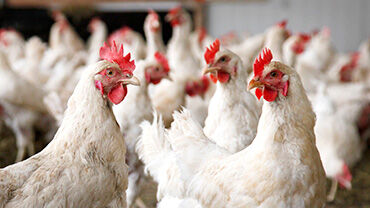Options IX for the Control of Influenza ConferenceArchived
Options IX was the largest international conference exclusively devoted to influenza prevention, control and treatment.
ECDC staff had a number of abstracts accepted at the conference:
Friday 26 August
11:15 am, Oral presentation: Surveillance of influenza-confirmed cases admitted to intensive care units and related fatal outcomes in eleven EU countries, 2010-2016 Friday, August 26, 2016, 11:15 am - 11:30 pm, Oral abstract session: Clinical Science, Room Location: Chicago Ballroom 10 Level 4, Presentation: Cornelia Adlhoch.
6:40 pm, Poster session ABSTRACT# P-280: Association of influenza virus subtypes between consecutive influenza seasons, EU/EEA, 2006-2014 Friday, August 26 2016, Rapid Oral Poster Presentation, Time: 6:42 PM, Presentation: Eeva Broberg, Chantal Quinten, Cornelia Adlhoch and Pasi Penttinen on behalf of the European Influenza Surveillance Network (EISN).
Background: Circulation of influenza subtypes varies between influenza seasons. Little is known about patterns of circulation from one season to another. We studied the association of influenza virus subtypes detected in consecutive influenza seasons in EU/EEA countries to understand the possible predictive value of the previous season for the upcoming season.
Method: We analysed the sentinel (with systematic sampling) and non-sentinel (with convenience sampling) influenza virological surveillance data reported to the European Surveillance System from all EU/EEA countries during the seasons 2006/07-2013/14. Data were excluded if viruses were not subtyped, the number of detections exceeded the number of tested specimens or if less than 10 specimens were tested per week. Countries were excluded from analysis of any pair of consecutive seasons (cycle) if they reported for <50% of weeks in either season. We assessed the association of weekly A(H1), A(H1) pdm09, A(H3) and B virus-specific detection rates in cycles for sentinel and non-sentinel specimens. We used multilevel Poisson regression with 7 cycles as repeated measures, treated countries as cluster, and corrected for week of reporting. A sensitivity analysis was performed omitting the 2009 pandemic cycle. Associations were reported as incidence rate ratios (IRR) and 95% confidence intervals (CI).
Conclusion: Six-11 countries reported sentinel and 3-10 non-sentinel data per each cycle. The proportion of sentinel and non-sentinel influenza detections varied by (sub)type across seasons, being highest for the A(H1)pdm09 subtype during season 2009/10 (99.4%; 99.3%). The A(H3) detections were highest during 2006/07 (92.5; 91.1%). The highest proportion of influenza B was observed in 2012/13 in sentinel (64.2%) and 2007/08 in non-sentinel specimens (78.1%).
Significant associations between consecutive seasonal influenza rates were found for A(H1) (2.73;1.33-5.61, p=0.006), A(H1)pdm09 (4.31;1.92-9.67, p<0.001) and B (0.03;0.02-0.07, p<0.001) virus in the sentinel system and for A(H1) (2.70;1.00-7.30, p=0.049), A(H1)pdm09 (3.87;1.50-10.01, p=0.005) and B (0.7;0.51-0.98, p=0.039) in the non-sentinel system. When omitting thepandemic cycle, the association remained significant for A(H1) and A(H1)pdm09 in the sentinel system.
The virological influenza surveillance data suggest that influenza A(H1) and B virus circulation during any season is associated with the circulation in the forthcoming season. Vaccination coverage and vaccine effectiveness have probably an impact on the results and cause country variation as well, however, they were not within the scope of this study.
Poster session ABSTRACT# P-322: Policy recommendations, payment schemes and uptake of seasonal influenza vaccine in health care workers in EU/EEA Member States assessed for the 2009/2010 to 2014/2015 influenza seasonsPresentation Date: Friday, 26 August 2016 Presentation: Kari Johansen, Svetla Tsolova, Pasi Penttinen et al on behalf of the VENICE project gatekeepers group)
Background: The European Council recommendation on seasonal influenza vaccination adopted in 2009 encourages European Union/ European Economic Area (EU/EEA) Member States (MS) (n=31, population of ~500 millions) to improve uptake of seasonal influenza vaccination among older age groups and individuals with chronic conditions to 75 % vaccination coverage. Increased vaccination rates among risk groups were expected to contribute to higher vaccination rates also in healthcare workers (HCWs). Following these recommendations data on reported national policy, payment schemes and measured/estimated uptake of seasonal influenza vaccine in HCWs were collected.
Method: A standardized online survey questionnaire was developed and made available to all EU/EEA MS gatekeepers.
Results: Of the 30/31 responding countries, 29 countries recommend seasonal influenza vaccine to HCWs. In Denmark no national recommendation is available, but most regions and municipalities offer HCWs influenza vaccination free of charge. Vaccination is recommended to all HCWs in 23 EU/EEA MS, while another 5 recommend vaccination to either front-line staff in close patient contact or staff caring for immuno-compromised patients only. In the UK vaccination is recommended for all HCWs in Northern Ireland and Scotland while England and Wales recommend front line HCWs only. No MS enforces mandatory vaccination of staff. Some health care settings in MS require unvaccinated staff to wear a mask during the influenza season. Payment schemes for vaccine/vaccination varied, with the employer, national or regional health services paying in 19 MS while 4 reported that at least some HCWs paid out of pocket. In the remaining seven countries a combination of several payment mechanisms exists (e.g. private insurance, out of pocket, employer or national insurance scheme). Uptake of seasonal influenza vaccine in HCWs was reported from fourteen EU/EEA MS and ranged between 5-55%. Information was collected by the administrative method (n= 13) or the survey method (n=1). Uptake in HCWs was often but not always lower than uptake in older populations, with a median uptake of ~25% among HCWs (n=14) compared to ~40% in older populations (n=23).
Conclusion: There is a need for collection of uptake of seasonal influenza vaccine in HCWs in all EU/EEA MS and at least in those reporting there is room for substantial improvement in uptake of seasonal influenza vaccination.
Saturday 27 August
6:00 pm, Poster session ABSTRACT# P-542: European surveillance of consumption of neuraminidase inhibitors and comparison with influenza virus circulation, EU/EEA Member States, 2007-2014Saturday, August 27, 2016, 6:00pm – 7:30pm, Presentation: Pasi Penttinen
Background: Antivirals for the treatment of influenza, i.e. neuraminidase inhibitors (NAIs), are licensed in all EU/EEA Member States (MSs). Recommendations for treatment of patients with severe influenza or at high risk of complications of influenza, and for prophylaxis of the most vulnerable persons and their families, are based on clear evidence from randomised controlled trials. Surveillance of NAI consumption has previously been suggested as an addition to laboratory surveillance of influenza to help in early and timely assessment of virus circulation, assessment of virus spread and activity level, and evaluation of public health policy implementation. We analysed data on NAI consumption from the European Surveillance of Antimicrobial Consumption Network (ESAC-Net) to assess their possible usefulness to complement weekly influenza surveillance.
Method: The ESAC-Net database and reporting of NAI consumption is characterised using the following attributes: monitoring method, data sources and time covered; variables available for analysis ; validation process; current use of the data ; timeliness of reporting; missing data; representativeness; and limitations. In this assessment we only analysed consumption of NAIs with an allocated defined daily dose (DDD), i.e. oseltamivir and zanamivir. We compared the quarterly reported consumption of NAIs with the proportion of positive influenza specimens submitted to the EU/EEA MSs sentinel laboratory surveillance system for the influenza seasons (four quarters ) 2007/08 to 2013/14. To explore whether NAI consumption could be used to monitor influenza transmission, we used cross-correlation analyses between proportion of positive samples and NAI consumption by MS. The cross-correlation was used to assess the nature of the relationship between the two time series and how they are correlated in time.
Results: Twenty/31 (71%) MSs were able to report quarterly data on consumption of NAIs , but only 12 (43%) had reported at least one complete winter season during 2007-2014. Consumption varied from 0.0002 to 0.269 DDD per 1 000 person days during a season. The timeliness, continuity, or consistency of data sources and reporting healthcare sectors were not adequate for analysis for six MSs. Further, it was also not possible to differentiate stockpiling from routine use, and treatmentfrom prophylaxis. In the six countries that provided continuous time-series of quarterly data during 2010-2014, NAI consumption showed a clear winter seasonality, consistent with influenza seasonality. After removing the long-term trends and seasonality from the data we found, in all six MSs , a significant correlation between NAI consumption and the overall proportion of positive influenza virus specimens in sentinel laboratory surveillance in the following quarter.
Conclusion: Our findings suggest that quarterly data on NAI consumption from EU/EEA MSs could be a feasible , though indirect, adjunct method for surveillance of influenza. However, too few MSs currently report data quarterly in a consistent and timely fashion, and the data do not allow for differentiating between stockpiling and use.







